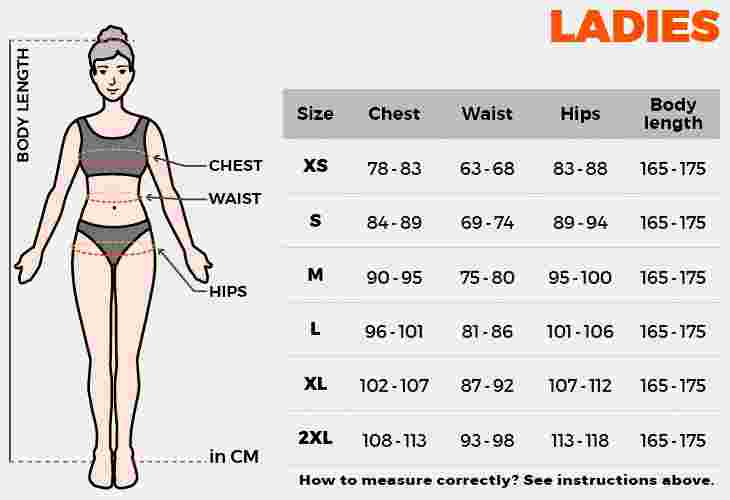Decoding Women’s Clothing Sizes: How Do They Really Work?
Introduction: Shopping for women’s clothing can often feel like navigating a complex maze. The seemingly endless array of sizes, each with its own nuances, can leave even the most seasoned shoppers feeling bewildered. Have you ever picked up two pairs of pants labeled the same size, only to find one fits snugly while the other is swimming on you? This is the enigma that surrounds women’s clothing sizes. Understanding how these sizes truly work is not just a matter of convenience; it’s crucial for making informed purchasing decisions. It empowers us to find clothing that flatters our figures, boosts our confidence, and saves us from the frustration of ill-fitting garments. In this article, we’ll unravel the mystery behind women’s clothing sizes, exploring their history, how they function in today’s market, and practical tips to master the art of size selection.
I. Introduction Women’s Clothing Sizes
- Discuss the complexity and confusion surrounding women’s clothing sizes: Walk into any clothing store, and you’ll be confronted with a bewildering variety of sizing labels. Women’s Clothing Sizes From single-digit numbers to alphanumeric combinations, it’s a jumbled mess. Different brands seem to have their own sizing languages, making it nearly impossible to predict what will fit based on a familiar size tag. A size 6 in one brand might be equivalent to a size 8 or even a 10 in another. This lack of standardization leads to countless returns, wasted time, and disappointed shoppers.
- Importance of understanding how sizes work to make informed shopping choices: When we understand the mechanics of clothing sizes, we can shop smarter. We no longer have to rely solely on the number on the tag. Instead, we can consider factors like fabric stretch, cut, and intended fit. Armed with this knowledge, we can confidently select pieces that not only look good but also feel comfortable. Whether it’s for a special occasion outfit or everyday wear, making informed choices saves us money and enhances our overall shopping experience.
II. History of Women’s Clothing Sizes
- Evolution of sizing standards over the years: Women’s clothing sizes have come a long way. In the early 20th century, there was little uniformity, with sizes varying widely between manufacturers. It wasn’t until the mid-1900s that attempts were made to standardize sizing. However, these standards have continued to evolve. Initially, sizes were based on relatively simple body measurements, but as fashion trends shifted and consumer demands changed, so did the sizing metrics. What was once a straightforward measurement-based system has now become intertwined with marketing and aesthetic considerations.
- Impact of vanity sizing on women’s perceptions of their bodies: Vanity sizing, the practice of labeling garments with smaller sizes than their actual measurements would suggest, has had a profound impact. While it may seem flattering to fit into a size 4 instead of a 6, it can distort our body image. Women often compare their sizes across brands, leading to feelings of inadequacy or false pride. This phenomenon not only affects our mental well-being but also further complicates the already convoluted sizing landscape.
III. How Do Women’s Clothing Sizes Work?
- Explanation of numeric sizes, including odd and even numbers: Numeric sizes typically range from 0 to 24 or more, with odd and even numbers often denoting different fits.Women’s Clothing Sizes Even numbers are commonly associated with more traditional or classic cuts, while odd numbers might be used for trendier, more fashion-forward styles. For example, a size 8 might offer a standard fit, while a size 9 could have a slimmer silhouette. However, this is by no means a hard and fast rule, as each brand interprets these numbers differently.
- Difference between junior, misses, petite, and plus sizes: Junior sizes are designed for younger women and tend to have a more youthful, fitted style. They usually have smaller bust and hip measurements compared to misses sizes, which are aimed at adult women and offer a broader range of fits. Petite sizes are tailored for shorter women, with shorter inseams and torso lengths to ensure a proper proportion. Plus sizes, on the other hand, accommodate fuller figures, providing more room in the bust, waist, and hips. Understanding these distinctions helps narrow down the search for the perfect fit.
- Importance of considering body shape and fit when choosing sizes: Our body shapes play a significant role in how clothing sizes translate to a flattering look. A woman with an hourglass figure might need to focus on accentuating her curves, while someone with a rectangular shape could seek styles that create the illusion of curves. It’s not just about the number on the tag; it’s about how the garment drapes and flatters our unique body contours. Paying attention to details like waist placement, sleeve length, and overall garment shape can make all the difference.
IV. Common Problems with Women’s Clothing Sizes
- Inconsistencies among brands and designers: As mentioned earlier, the lack of consistency in sizing across brands is a major headache. A brand known for its trendy, young designs might size its clothing smaller to appeal to a particular demographic, while a more traditional brand might adhere closer to standard measurements. This means shoppers can’t rely on their usual size and must constantly reevaluate with each new purchase.
- Need for more inclusive sizing options: The fashion industry has made strides in recent years, but there is still a long way to go in terms of inclusivity. Many brands offer a limited range of plus sizes or petite sizes, leaving out a significant portion of the market. There is a growing demand for sizes that truly reflect the diversity of women’s bodies, from the very small to the very large, and everything in between.
- Psychological effects of sizing discrepancies on women’s self-esteem: The constant battle with sizing can take a toll on our self-esteem. When we struggle to find our size or feel pressured to fit into a certain number, it can lead to negative body image and self-doubt. The fashion industry has a responsibility to address this issue by providing clear, consistent sizing and promoting body positivity.

